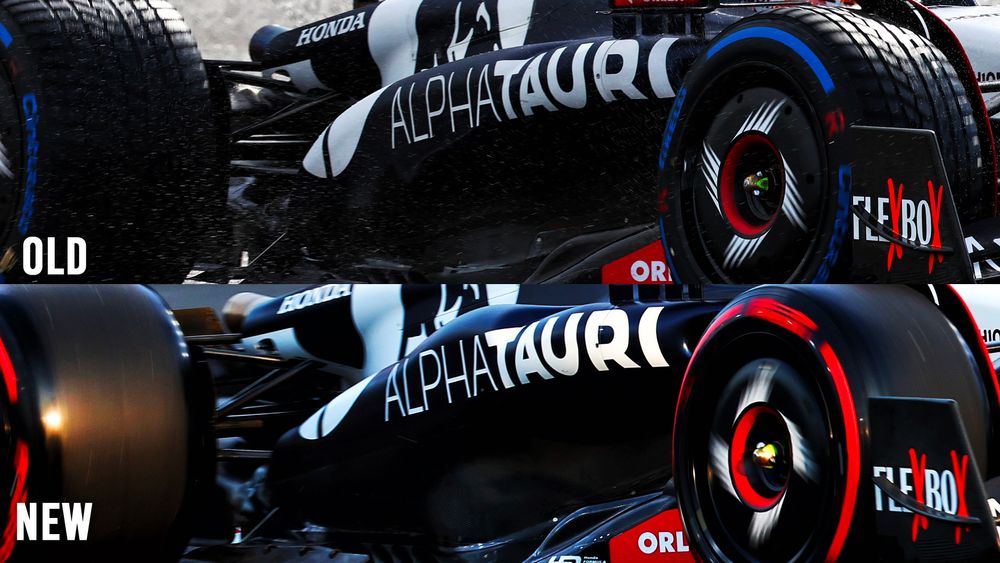Up Next

Lying 10th in the 2023 Formula 1 constructors championship with a total of five points is not what anyone expected from AlphaTauri this year, especially when you consider it’s the sister team of Red Bull, which other than that small slip on a banana skin in the Singapore Grand Prix has dominated.
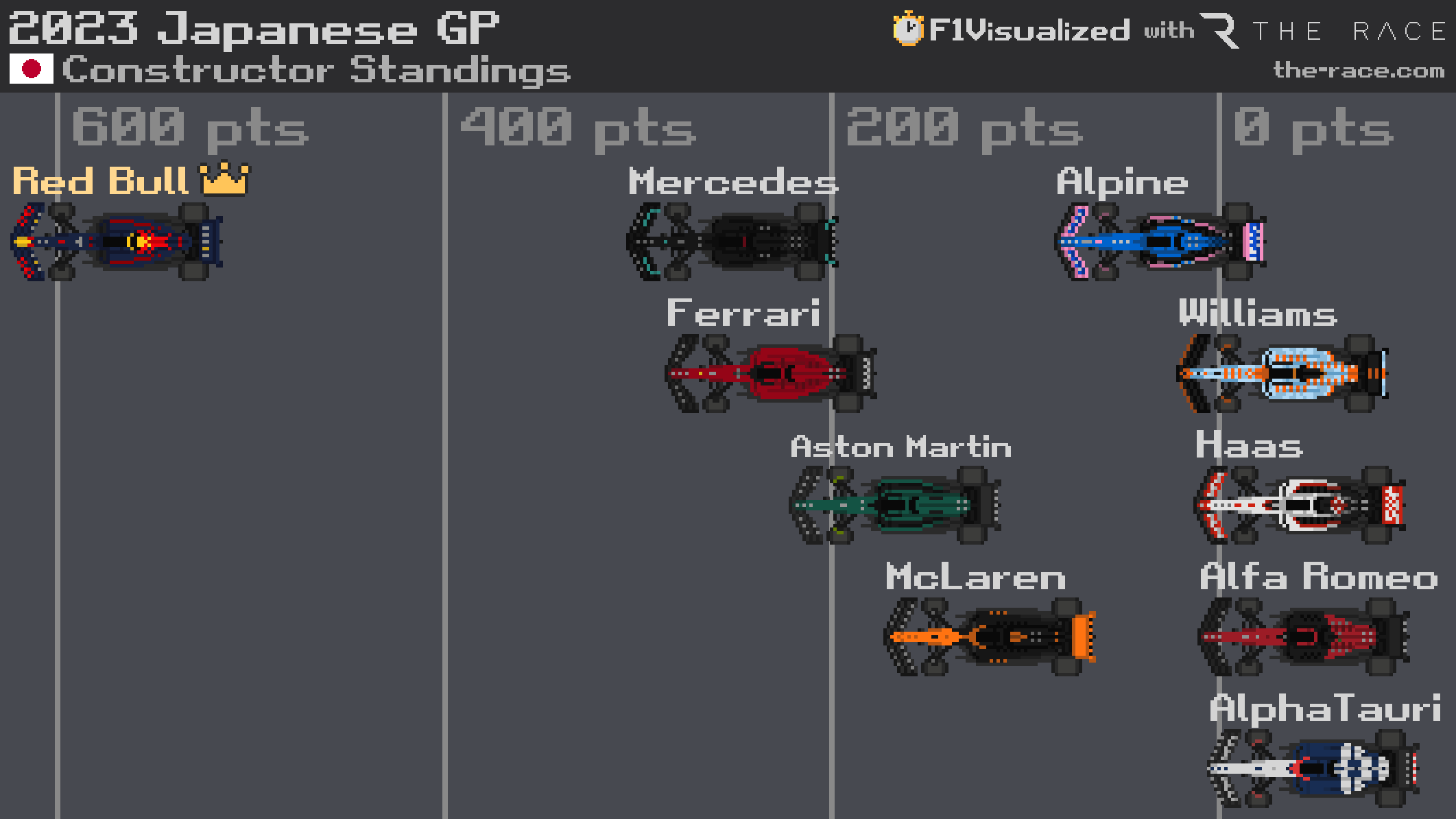
However, its performance level has picked up over the last few races and it is now in a position to be reaching Q3 and knocking on the door for points, as opposed to languishing well down the back of the group of cars that are battling for seventh in the championship.
AlphaTauri has struggled for overall aerodynamic load this year and also to produce consistent downforce across a wide range of ride heights. It has also had problems with late-entry instability in slow and medium speed corners.
The upgrade has tackled these problems, primarily by adding downforce without compromising the efficiency of the car.
Looking at some of the changes, the upgrade introduced in Singapore that has led to this improvement is a fairly big package of small developments. There is no magic bullet, it is the sum of all the small details that add up to a competitive car.
The area of the floor just in front of the rear tyre has had a small geometry change. You can’t muscle the airflow to do what you want with it, you need to coerce it by creating low pressure areas where you want the flow to go. Get that right and this is what will create that oft-used phrase ‘aerodynamic flow structure’ around the car.
As the underfloor leading edge splitters turn the underbody flow outwards, this then gets pulled into a low pressure area created by the sidepod undercut. In turn it will start to rotate, generating a vortex that will grow in strength as it moves along the outer edge of the floor.
The plan-view curvature on that outer edge is what allows this vortex to grow. On the old floor, it was wider so didn’t really connect up with where the tyre-squirt flows go inside the rear tyre.
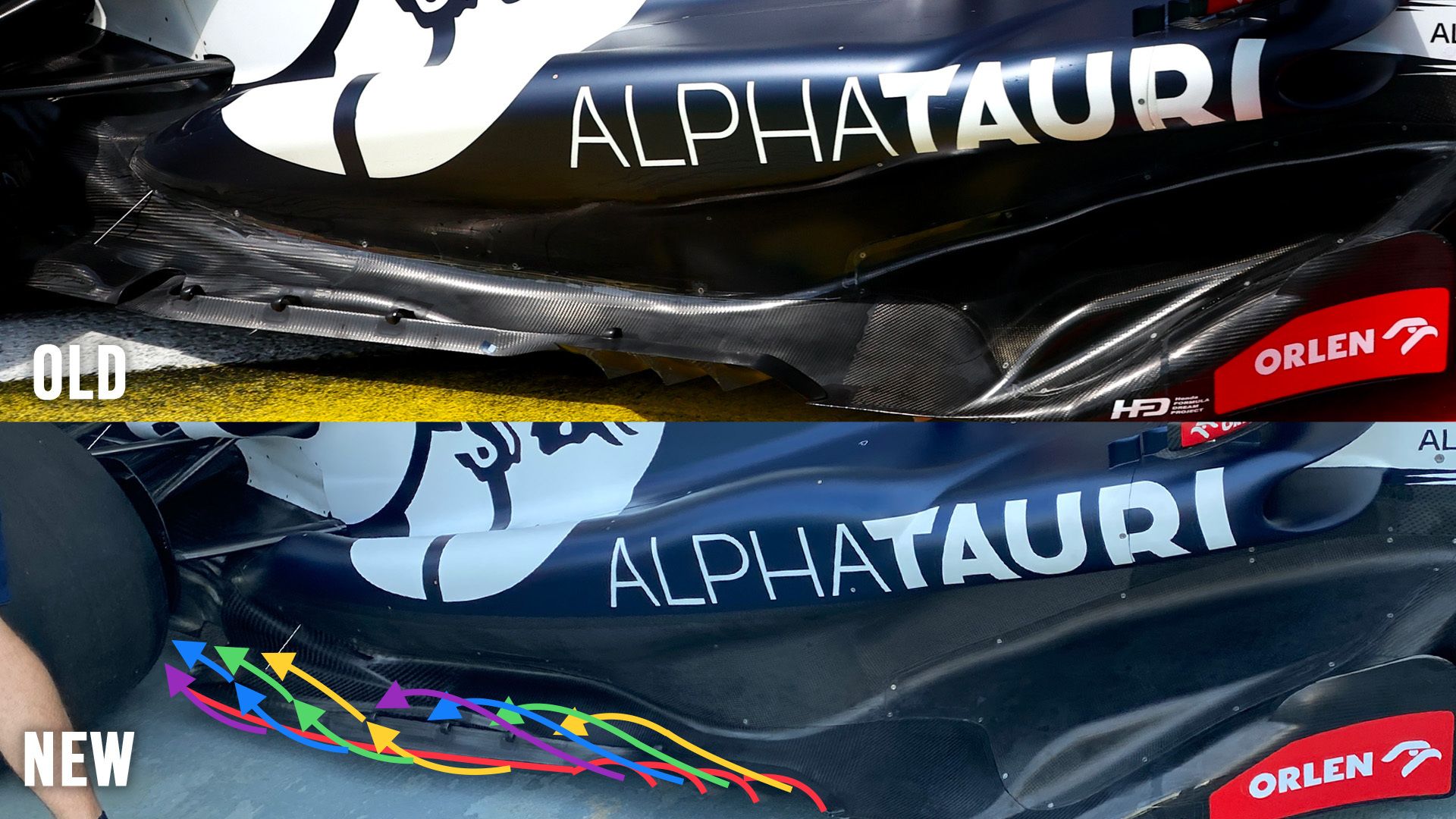
The different colours demonstrate how it starts at the beginning with the yellow arrows turning to green, blue and then magenta. They have all got to work together, so the timing of how they are set up at the edge of the floor (the red line denotes the floor edge shape) is critical.
You can also see that the small tunnel just inside the floor edge wing has been increased in length. It now goes much further forward, creating that local low pressure that helps maintain the vortex. This, in turn, helps aerodynamically seal the sides of the floor.
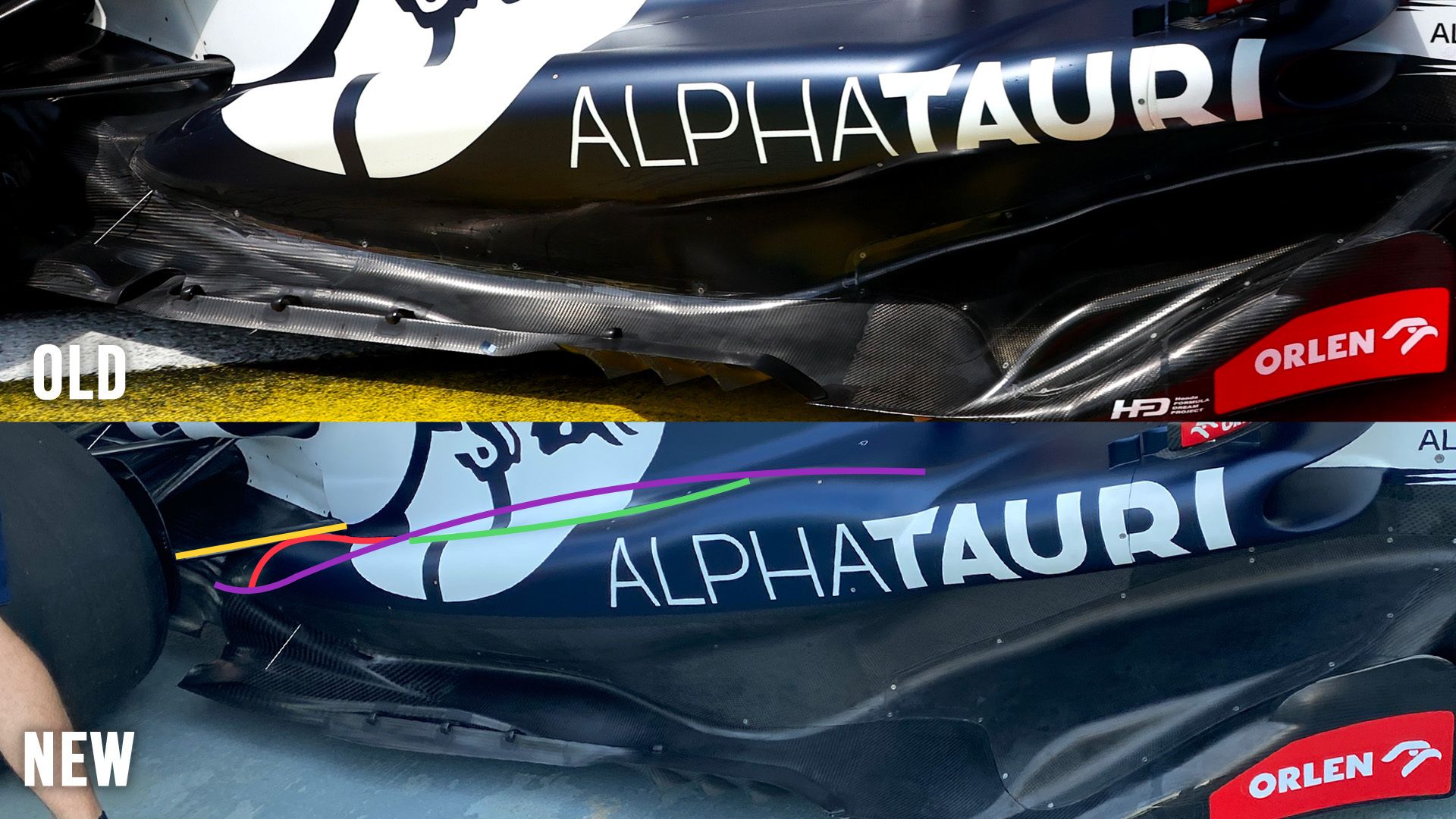
The upper surface of the sidepods has also been changed. On the image above, the rear lower wishbone forward leg is highlighted in yellow as a reference point and the magenta highlight line shows the profile of the previous sidepod upper surface. We can see the red highlight area is increased in volume and the green highlight area is a reduction in volume.
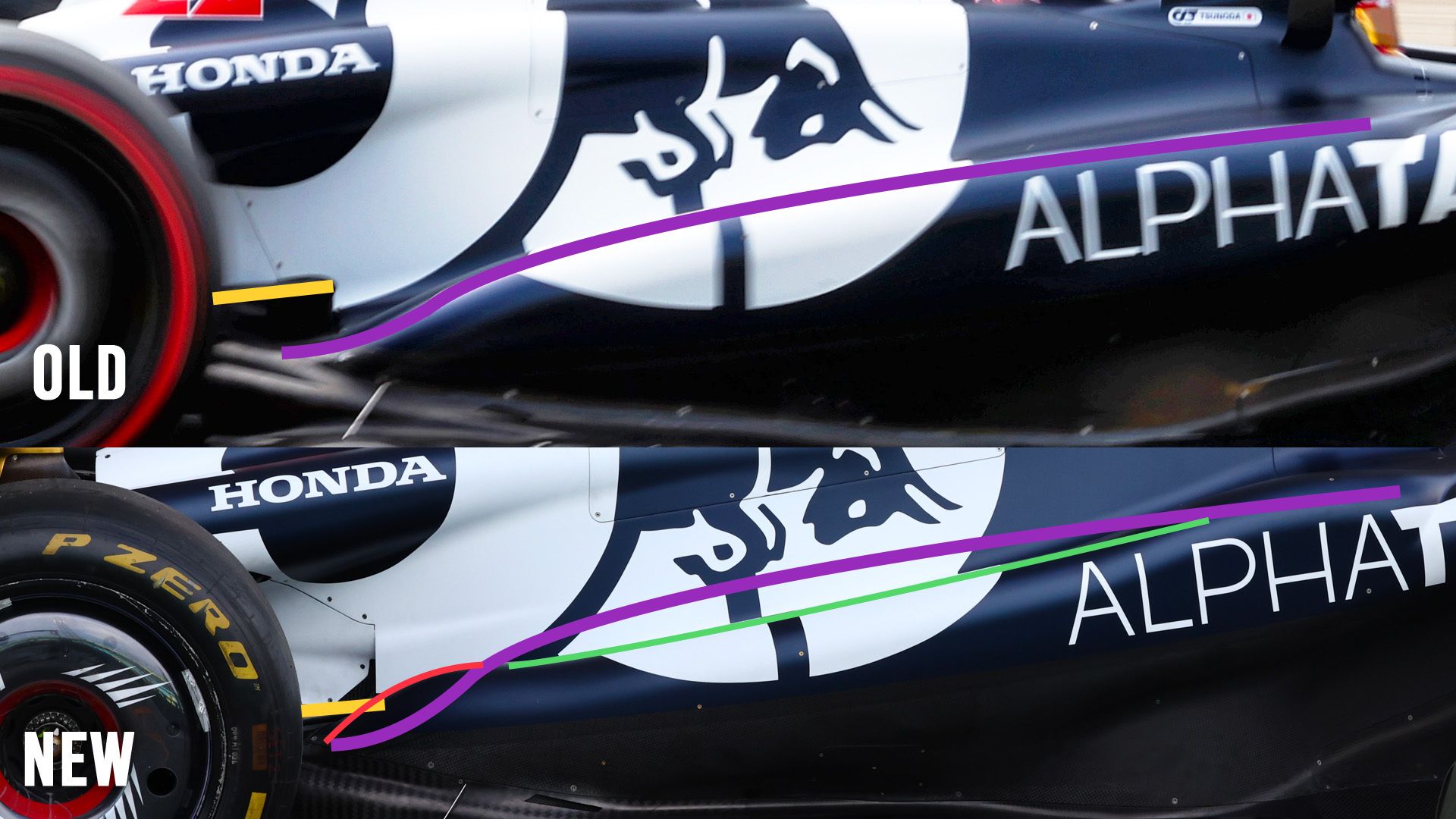
In this view, you can see that AlphaTauri has created more of a valley on the sidepod upper surface where it runs into the inner surface covering the engine and gearbox. I have put on the same colours as above. The bulge highlighted in red at the rear is to separate that top surface flow and prevent it from disrupting the vortices set up by the floor edge wing.
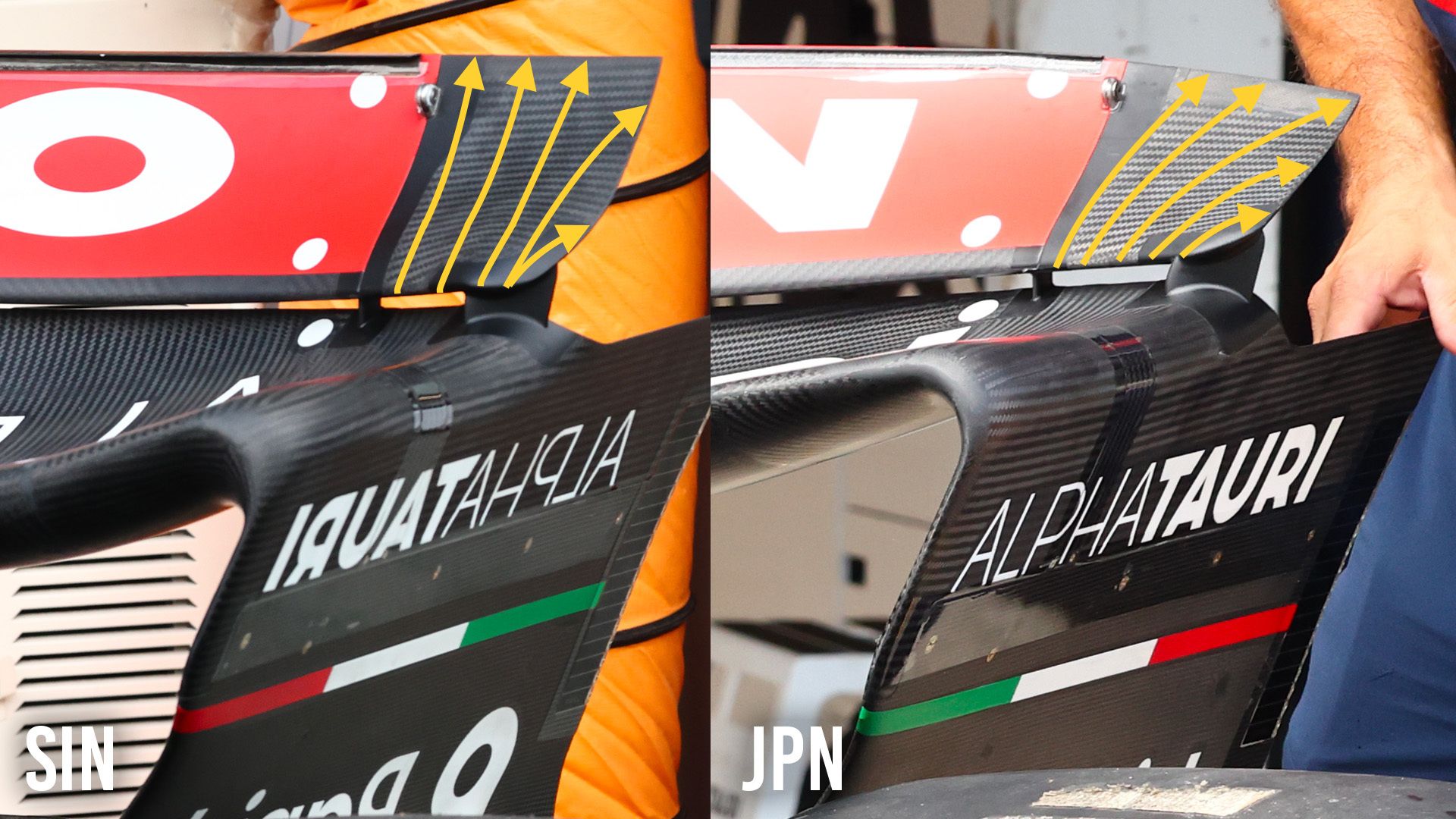
AlphaTauri also introduced another rear wing modification at Suzuka the week after its initial package.
When I saw what McLaren had come up with on the outer end of the rear wing flap for Zandvoort, I said at the time that it would be interesting to see when the other teams would adopt it. Other than for tracks like Monaco, you are always trying to improve the efficiency of every part of the car and that is exactly what this does.
There will be a small trade-off as far as downforce is concerned, but this outer end of the wing flap to endplate is the most inefficient part of the assembly.
When it is all connected up, as was the norm before McLaren introduced its interpretation of what is possible, the different pressures in this area of the wing set up a vortex that the car is effectively dragging along behind it. There will still be a smaller vortex at the end of the flap, but it will be focused on the undersurface of the flap as opposed to the inside of the rear wing endplate.
This small step between Singapore and Suzuka will just be an improvement in efficiency to suit the circuit requirements.
This all adds up to a car that has proved to be competitive both in Singapore and Japan, two vastly different tracks. That means it should be a points contender for the rest of the season.
The question is whether that's enough to move it out of last place in the constructors' championship and climb the four-team group fighting for seventh in the championship that's only covered by 16 points.

